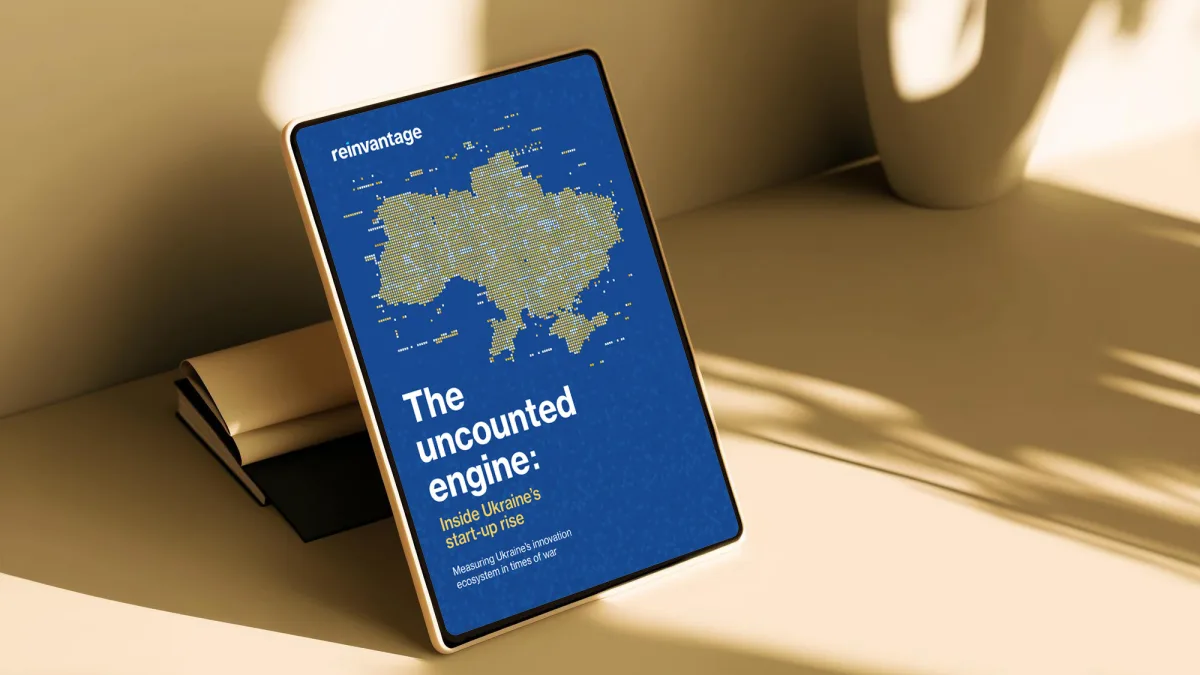The machinery of government—that monument to paperwork, queues, and bureaucracy—faces its most serious challenger yet. Across continents, from the favelas of São Paulo to the hills of Kigali, reinvention is dismantling centuries-old assumptions about what government can (and should) be.
Consider this: in Rwanda, you can now register a business in six hours online, whilst in America, the much-vaunted Department of Government Efficiency (DOGE) has managed to achieve the opposite of its name, creating such bureaucratic gridlock that air traffic control towers cannot easily pay to have their windows washed.
This contrast raises a fundamental question: what does government mean in the 21st century? More crucially, how should emerging markets—unencumbered by legacy systems but starved of resources—reinvent the very idea of the state?
Digitalisation, often touted as the solution, is—in and of itself—no panacea. Real transformation lies not in technology but in how governments use it to empower citizens. A smartphone app that merely digitises a broken process creates digital bureaucracy, not digital government.
The winners are those who recognise that technology is merely the means—the end is creating states that enable rather than encumber, that activate rather than administrate.
The American experiment in creative destruction
DOGE, America’s latest attempt at government efficiency, reads like a Silicon Valley fever dream transplanted to Washington. Elon Musk claimed 150 billion US dollars in cuts, though fact-checkers disputed this figure and a Republican caucus leader admitted house of representative members always knew it was a “massive exaggeration”.
The reality proved more mundane: 523,000 deactivated credit cards (including those used to pay the cleaners of air traffic control tower windows) and the elimination of 6,505 unused phone lines.
Indeed, DOGE’s real innovation is not its savings but its chaos. New rules mandating review and approval by political appointees have left thousands of contracts and projects on ice for months. This is efficiency through paralysis—a peculiarly American approach to reform that mistakes disruption for improvement.
Throwing Silicon Valley engineers at government problems without understanding the intricacies of democratic institutions produces, it appears, not streamlined services but bureaucratic neurosis.
Brazil: The art of instant transformation
For a more instructive vignette, consider Brazil’s PIX payment system—perhaps the most successful government technology intervention of the past decade. Launched by Brazil’s Central Bank in November 2020, PIX enables instant payment between individuals, companies, and government, settling in three seconds on average versus two days for debit cards and 28 days for credit cards.
About 140 million people use the service—almost two-thirds of Brazil’s population—and it processes more than three billion transactions each month. In 2023, more than 36 billion PIX transactions were carried out, representing over a third of all banking transfers.
What makes PIX remarkable isn’t just its scale but its design philosophy. The authorities have set a requirement on PIX to be free for individuals, and the cost of a payment transaction for firms is only 0.33 per cent versus 1.13 per cent for debit cards and 2.34 per cent for credit cards. Since PIX is a real-time payment, merchants can receive funds anytime after a sale and eliminate intermediaries.
Brazil’s genius was treating the central bank as a platform operator rather than just a regulator. The BCB is the infrastructure provider and regulator, preventing big technology companies from quickly gaining market share and extracting fees from participants.
India: Digital infrastructure at impossible scale
If Brazil represents precision engineering, India embodies audacious scale. The India Stack—comprising digital identity (Aadhaar), payments (UPI), and data governance—serves 1.3 billion people.
In May 2025, 18.67 billion UPI transactions worth approximately 293 billion US dollars were processed. Banks’ costs of onboarding customers in India has decreased from 23 US dollars to 0.10 US dollars with the use of India Stack.
India’s approach differs fundamentally from Western models. India Stack is a unique approach to developing digital infrastructure through a partnership between the government and the private sector—neither the corporation-centred model of America nor the government-centred approach of China, but something altogether new.
Singapore: The art of systematic transformation
Singapore’s Smart Nation initiative represents perhaps the most methodical approach to government digitisation. Currently, 95 per cent of all transactions with the government are digital from end-to-end. But Singapore’s true innovation lies not in its technology but in its governance.
Smart Nation was launched in 2014 with the focus of building and strengthening the Singapore government’s internal engineering and digital capabilities. This is government as technology company—a fusion that would terrify constitutional purists but delights efficiency enthusiasts.
Singapore’s secret is institutional. Unlike DOGE’s chaotic assault on bureaucracy, Singapore built capacity systematically. Smart Nation has established a centre of excellence for ICT, comprising five capability centres in areas like data science and artificial intelligence, sensors and IoT, and government cybersecurity.
Kenya: Bridging the digital divide
Kenya offers an instructive tale for other African nations. The country’s eCitizen portal, launched in 2014, provides access to over 5,000 digitised government services. But the real innovation lies in how Kenya addressed the digital divide through its Huduma Centres—physical service points that bridge online and offline government interaction.
There are 52 Huduma centres established since the inception of the programme, serving on average 42,000 people daily, providing 20-55 services from government agencies. The genius is in recognising that digital government doesn’t mean abandoning physical infrastructure—it means reimagining how they work together.
Cybercafés have started to fill the gap, becoming an emergent market solution to bridge the digital divide and fulfil the government’s promise of access. This is institutional entrepreneurship in action: creating space for private actors to solve public problems whilst maintaining government oversight.
Rwanda: The African digital pioneer
Perhaps nowhere is the potential of government reinvention more apparent than in Rwanda. The country’s Irembo portal serves over nine million subscribers with more than 96 government e-services in a country of 13 million.
According to the 2020 UN E-Government Survey, Rwanda was particularly noted as a country that despite having poorly developed infrastructure its online services are well developed compared to most other countries in Africa.
The lesson from Rwanda is that digital government isn’t about having the best infrastructure—it’s about having the best vision. The government’s goal is to more than triple the technology sector’s contribution from three per cent of Rwanda’s annual GDP to 10 per cent within a decade.
The art of institutional entrepreneurship
But technology alone is insufficient. Real government reinvention requires what might be called institutional entrepreneurship—the ability to reimagine not just how government works, but what it’s fundamentally for.
The result is that government in countries that truly understand reinvention is less about administration and more about activation: activating economic potential, activating social mobility, activating human capability.
Consider what this means in practice. Traditional government responds to problems after they’ve occurred—processing unemployment benefits, cleaning up environmental disasters, managing the aftermath of economic crises. The new model anticipates and prevents: creating systems that make unemployment less likely, building platforms that anticipate natural disasters and mitigate their impact, establishing infrastructure that makes prosperity possible.
This shift from reactive administration to proactive activation represents the deepest change in governance since the emergence of the modern welfare state. In Brazil, PIX doesn’t just process payments—it enables a new form of economic participation for millions previously excluded from the formal financial system.
Brazil has millions of people who were unbanked, many because usage fees attached to a bank account or credit card were unaffordable. Because it’s free to individuals, PIX has gotten them in the game.
In India, the stack approach creates what economists call ‘infrastructure for innovation’—basic digital plumbing that enables countless applications nobody in government could have imagined. FinTech apps are now able to leverage formalised data such as transaction value, e-bills, e-invoices to underwrite loans to micro vendors, creating a positive feedback loop to lift the country’s economy.
Government as a platform
This is government as platform—not just delivering services, but creating the conditions for others to build value. The state becomes less a service provider and more an enabler of capability. It’s the difference between giving someone a fish and teaching them to fish, except at the scale of entire economies.
The institutional entrepreneur recognises that markets and states aren’t opposites but partners in a complex dance of development. In Rwanda’s case, the private sector will need to play a far greater role in spearheading digitisation, through both increased technology adoption and support for innovation that can enhance productivity, spawn new services and create new off-farm jobs.
The state as start-up
The most successful government transformations share a common thread: they treat the state like a start-up, not a heritage building. Estonia, another digital pioneer, built from scratch. Brazil created new systems alongside old ones. Singapore systematically rebuilt its capabilities. Rwanda leapfrogged entire generations of bureaucratic evolution.
Emerging markets have an advantage here that richer nations increasingly lack: the freedom to experiment. The avoidance of this legacy trap allowed policy-makers to avoid large-scale investments into ICT as budgetary means were scarce. Constraints breed innovation.
But this start-up mentality goes deeper than just adopting new technology. It means embracing what venture capitalists call ‘minimum viable government’—starting with basic functions that work, then iterating rapidly based on user feedback. It means treating citizens as customers whose satisfaction determines success. It means measuring outcomes, not inputs.
Most importantly, it means accepting that government’s role is changing fundamentally. The industrial-age model of government—hierarchical, standardised, one-size-fits-all—is giving way to something more fluid and responsive. Government becomes less about control and more about coordination, less about commanding and more about convening.
In this new model, the state’s legitimacy comes not from its authority to compel but from its ability to enable. Success is measured not by the size of the bureaucracy but by the prosperity of the people. The best government is not the one that does the most, but the one that makes it possible for others to do their best.
This transformation isn’t just about emerging markets catching up to developed ones—it’s about pioneers showing the rest of us the way forward.
In the race to build government for the digital age, the winners won’t be those with the biggest budgets or the oldest institutions, but those with the freshest thinking about what government can be.







